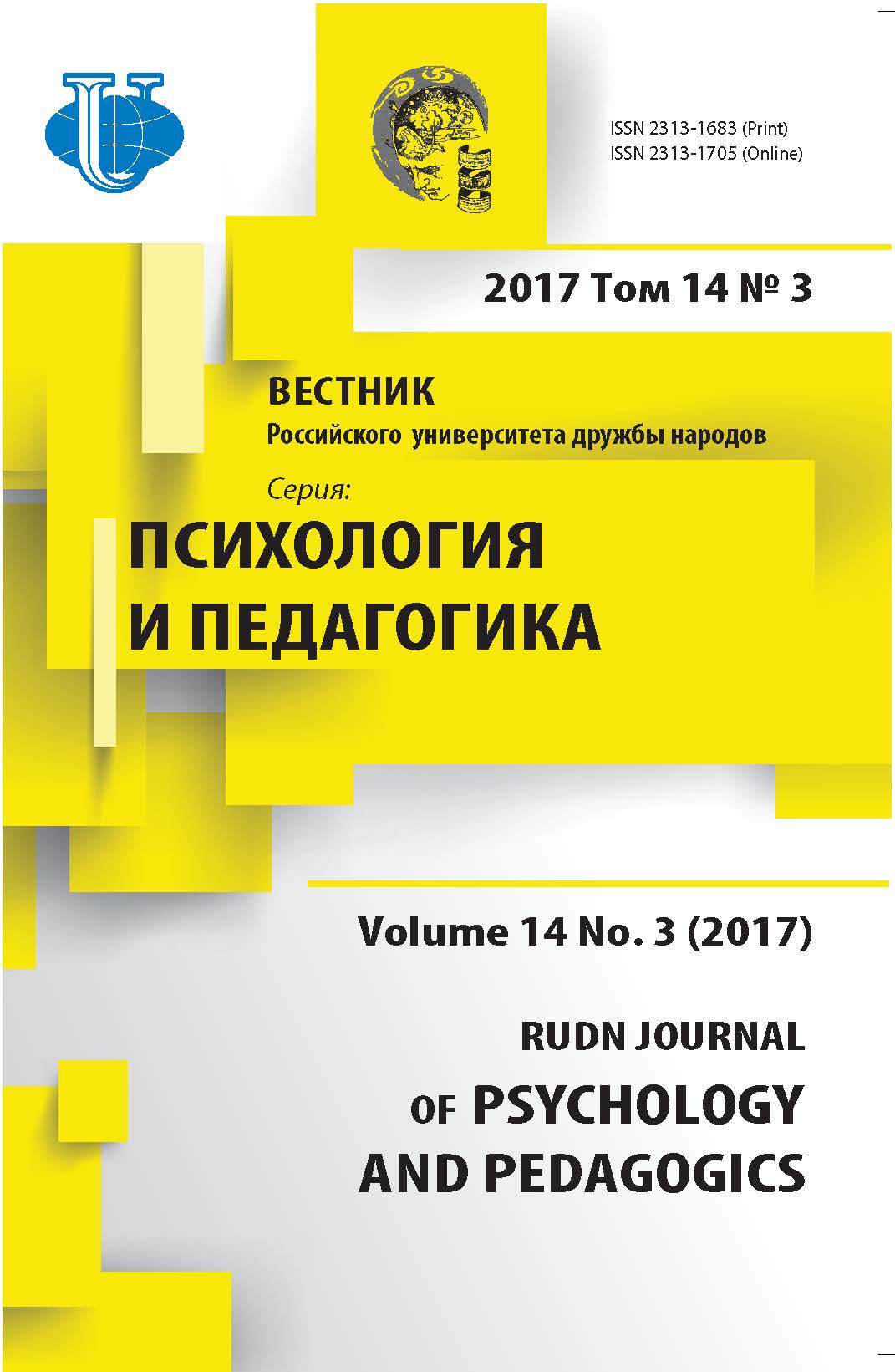ПОВРЕЖДЕНИЯ В РЕЗУЛЬТАТЕ ЭЛЕКТРОСУДОРОЖНОЙ ТЕРАПИИ КАК ПОКАЗАТЕЛЬ ДВУХ ЭТАПОВ ВОСПРОИЗВЕДЕНИЯ ИЗ КРАТКОВРЕМЕННОЙ ПАМЯТИ: НЕВРОЛОГИЧЕСКОЕ ОБЪЯСНЕНИЕ
- Авторы: Тарноу Ю.1
-
Учреждения:
- Авалон Бизнес Системс, Инк
- Выпуск: Том 14, № 3 (2017)
- Страницы: 273-281
- Раздел: Статьи
- URL: https://journals.rudn.ru/psychology-pedagogics/article/view/16587
- DOI: https://doi.org/10.22363/2313-1683-2017-14-3-273-281
Цитировать
Полный текст
Аннотация
В последнее время было показано, что свободное воспроизведение из кратковременной памяти (КП) состоит из двух этапов: первые несколько воспроизведений «опустошают» ра-бочую память, второй этап имеет характер реактивации [Tarnow, 2015; обзор теоретических предпосылок представлен Мердоком (1974)]. Бейли с соавт. (Bayley et al., 2000) исследовали свободное воспроизведение у людей, прошедших электросудорожную терапию (ЭСТ), и об-наружили, что эффекты и новизны, и первичности остались нормальными. В данной работе исследование было продолжено для проверки предположения о том, что воспроизведение из КП происходит под контролем КП и четко отделено от следов долговременной памяти, при этом ЕСТ не оказывает влияния на функции контроля КП.Данные из исследования Бейли с соавт. (Bayley et al., 2000) были использованы для срав-нения КП 11 пациентов, подвергавшихся ЭСТ, с контрольной группой (50 человек) и группой пациентов с болезнью Альцгеймера (50 человек).Выявлены различия в вероятности свободного воспроизведения из КП и общей вероят-ности воспроизведения. Это подтверждает, что контроль КП (отвечающий за рабочую память и реактивацию) отделен от следов долговременной памяти (отвечает за общую вероятность воспроизведения информации).Опираясь на обзор Эббота с соавт. (Abbott et al., 2014a), показывающий избыточную актив-ность в височных долях мозга и отсутствие активности в лобных долях при ЭСТ, можно пред-положить, что контроль КП перегружен работой в процессе установки стабильных связей в долговременной памяти. Возможно, нарушения воспроизведения, возникающие в результате ЭСТ, связаны с ошибками в этом процессе, что указывает на неврологическую природу данных нарушений.
Об авторах
Юджин Тарноу
Авалон Бизнес Системс, Инк
Email: etarnow@avabiz.com
Ph.D., независимый исследователь, директор, Авалон Бизнес Системс, Инк (Нью-Йорк, США). 18-11 Редбурн Роад, Фейр Лоун, Нью-Джерси 07410, США
Список литературы
- Abbott, C.C., Gallegos, P., Rediske, N., Lemke, N.T., & Quinn, D.K. (2014a). A review of longitudinal electroconvulsive therapy: neuroimaging investigations. Journal of geriatric psychiatry and neurology, 27(1), 33-46. doi: 10.1177/0891988713516542
- Abbott, C.C., Jones, T., Lemke, N.T., Gallegos, P., McClintock, S.M., Mayer, A.R., ... & Calhoun, V.D. (2014b). Hippocampal structural and functional changes associated with electroconvulsive therapy response. Translational psychiatry, 4(11), e483. doi: 10.1038/tp.2014.124
- Alvarez, P., & Squire, L.R. (1994). Memory consolidation and the medial temporal lobe: a simple network model. Proceedings of the National Academy of Sciences, 91(15), 7041-7045. doi: 10.1073/ pnas.91.15.7041
- Bayley, P.J., Salmon, D.P., Bondi, M.W., Bui, B.K., Olichney, J., Delis, D.C., ... & Thal, L.J. (2000). Comparison of the serial position effect in very mild Alzheimer’s disease, mild Alzheimer’s disease, and amnesia associated with electroconvulsive therapy. Journal of the International Neuropsychological Society, 6(03), 290-298. doi: 10.1017/S1355617700633040
- Crow, T.J. & Grove-White, I.G. (1973). An analysis of the learning deficit following hyoscine administration to man. British Journal of Pharmacology, 49 (2), 322-327. doi: 10.1111/j.1476-5381.1973.tb08379.x
- Dominique, J.F., Roozendaal, B., Nitsch, R.M., McGaugh, J.L., & Hock, C. (2000). Acute cortisone administration impairs retrieval of long-term declarative memory in humans. Nature neuroscience, 3(4), 313-314
- Frith, C.D., Richardson, J.T.E., Samuel, M., Crow, T.J., & McKenna, P.J. (1984). The effects of intravenous diazepam and hyoscine upon human memory. The Quarterly Journal of Experimental Psychology, 36(1), 133-144. doi: 10.1080/14640748408401507
- Goldman-Rakic, P.S. (1995). Cellular basis of working memory. Neuron, 14(3), 477-485. doi: 10.1016/0896-6273(95)90304-6
- Kandel, E.R., Dudai, Y., & Mayford, M.R. (2014). The Molecular and Systems Biology of Memory. Cell, 157(1), 163-186
- Kitamura, T., Ogawa, S.K., Roy, D.S., Okuyama, T., Morrissey, M.D., Smith, L.M., ... & Tonegawa, S. (2017). Engrams and circuits crucial for systems consolidation of a memory. Science, 356(6333), 73-78. doi: 10.1126/science.aam6808
- Lee, W.H., Lisanby, S.H., Laine, A.F., & Peterchev, A.V. (2014, August). Stimulation strength and focality of electroconvulsive therapy and magnetic seizure therapy in a realistic head model. Engineering in Medicine and Biology Society: Proceeding of 36th Annual International Conference of the IEEE (pp. 410-413). Chicago: IEEE. doi: 10.1109/EMBC.2014.6943615
- McClelland, J.L., McNaughton, B.L., & O’reilly, R.C. (1995). Why there are complementary learning systems in the hippocampus and neocortex: insights from the successes and failures of connectionist models of learning and memory. Psychological review, 102(3), 419. doi: 10.1037/0033-295X.102.3.419
- Murdock, B.B. (1974). Human memory: Theory and data. Lawrence Erlbaum
- Rosenbaum, R.S., Gilboa, A., & Moscovitch, M. (2014). Case studies continue to illuminate the cognitive neuroscience of memory. Annals of the New York Academy of Sciences, 1316(1), 105-133
- Roy, D.S., Arons, A., Mitchell, T.I., Pignatelli, M., Ryan, T.J., & Tonegawa, S. (2016). Memory retrieval by activating engram cells in mouse models of early Alzheimer’s disease. Nature, 531(7595), 508-512. doi: 10.1038/nature17172
- Summers, W.K., Robins, E., & Reich, T. (1979). The natural history of acute organic mental syndrome after bilateral electroconvulsive therapy. Biology Psychiatry, 14(6), 905-912
- Talmi, D., Grady, C.L., Goshen-Gottstein, Y., & Moscovitch, M. (2005). Neuroimaging the serial position curve: A test of single-store versus dual-store models. Psychological Science, 16(9), 716- 723
- Tarnow, E. (2008). Response probability and response time: a straight line, the Tagging/Retagging interpretation of short term memory, an operational definition of meaningfulness and short term memory time decay and search time. Cognitive neurodynamics, 2(4), 347-353. doi: 10.1007/s11571008-9056-y
- Tarnow, E. (2009). Short term memory may be the depletion of the readily releasable pool of presynaptic neurotransmitter vesicles of a metastable long term memory trace pattern. Cognitive neurodynamics, 3(3), 263-269. doi: 10.1007/s11571-009-9085-1
- Tarnow, E. (2015) First direct evidence of two stages in free recall and three corresponding estimates of working memory capacity. RUDN Journal of Psychology and Pedagogics, (4), 15-26
- Tarnow, E. (2016a) Indirect Evidence: Mild Alzheimer’s Disease & Cannabis Affect the Second State of Free Recall Suggesting Localization in Hippocampal CA1. RUDN Journal of Psychology & Pedagogics, (2), 36-44
- Tarnow, E. (2016b). Preliminary Evidence--Diagnosed Alzheimer’s Disease But Not MCI Affects Working Memory Capacity-0.7 of 2.7 Memory Slots is Lost. arXiv preprint arXiv:1603.07759
- Teter, B., & Ashford, J. W. (2002). Neuroplasticity in Alzheimer’s disease. Journal of neuroscience research, 70(3), 402-437. doi: 10.1002/jnr.10441















